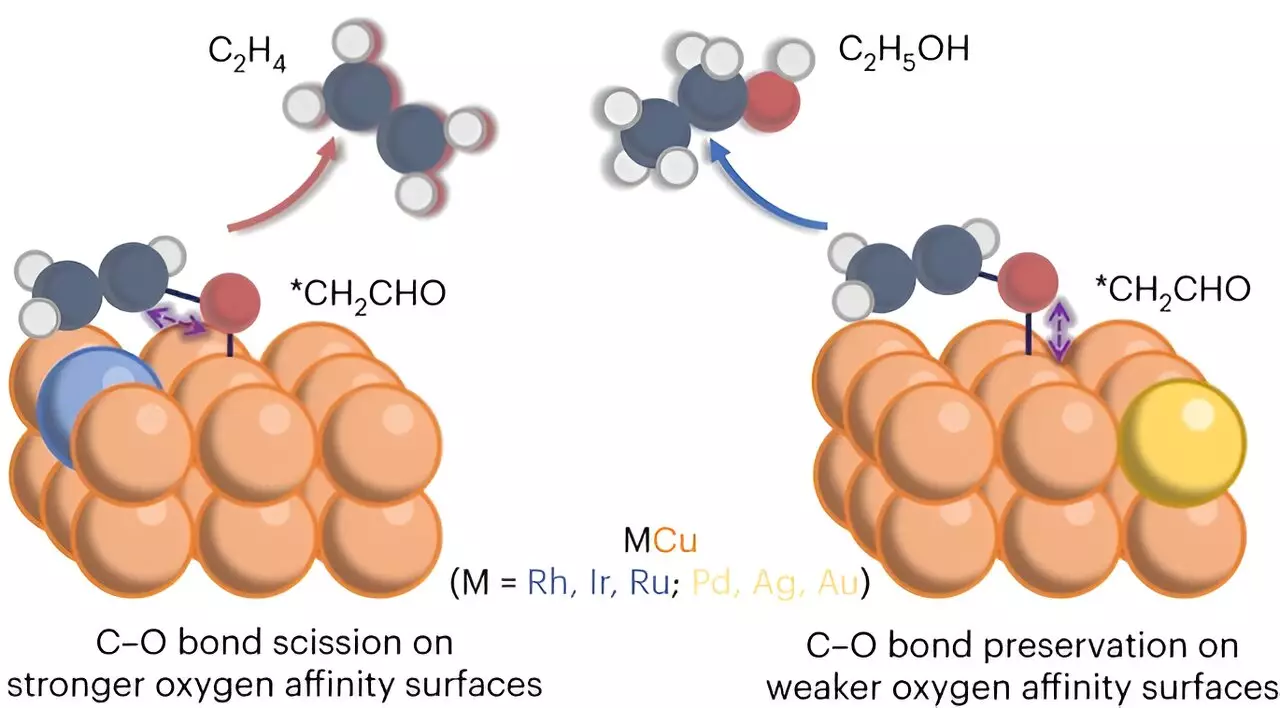In a groundbreaking development, engineers at the University of Cincinnati have revolutionized the process of converting carbon dioxide into valuable products, addressing climate change concerns while maximizing efficiency. Associate Professor Jingjie Wu and his team have successfully modified a copper catalyst, significantly enhancing the electrochemical conversion of carbon dioxide into ethylene. This innovation holds immense potential as ethylene is a fundamental component of various industries, from plastics to antifreeze. Moreover, producing ethylene through sustainable means rather than relying on fossil fuels can contribute to the reduction of carbon emissions and combat climate change.
Ethylene, often hailed as “the world’s most important chemical,” plays a pivotal role in modern society. Its versatility is unmatched, with numerous applications ranging from textiles to vinyl. In fact, the chemical industry generated a staggering 225 million metric tons of ethylene in 2022. However, the conventional steam-cracking process utilized for ethylene production is notorious for its significant carbon dioxide emissions. By harnessing carbon dioxide as a valuable feedstock rather than relying on fossil fuels, Wu’s team has demonstrated the potential to effectively recycle carbon dioxide while producing ethylene.
The research team, including lead author Zhengyuan Li, conducted a series of experiments in the field of electrocatalytic conversion of carbon dioxide. Through their studies, they discovered that employing a modified copper catalyst resulted in a substantial increase in ethylene production. Li explained that their research sheds light on the divergence between ethylene and ethanol during electrochemical carbon dioxide reduction, presenting a viable approach to directing selectivity towards ethylene. Wu further emphasized that their goal is to develop a process that focuses on generating a single product, streamlining efficiency and sustainability.
While the breakthrough in the conversion process is promising, there are hurdles to overcome before it can be widely adopted commercially. The efficiency of the conversion system diminishes with the formation of byproducts such as potassium hydroxide on the copper catalyst. Li emphasized that improving electrode stability is crucial for commercial deployment. The team’s subsequent focus is to enhance stability and extend the operation from 1,000 to an impressive 100,000 hours. This refinement process is essential to realize the full potential of this technological advancement.
Professor Wu envisions that these novel technologies will contribute to a greener and more energy-efficient chemical industry. By harnessing renewable electricity and sustainable feedstock, the ultimate objective is to decarbonize chemical production. This ambitious goal aligns with global efforts to combat climate change and reduce dependence on non-renewable resources. The breakthrough in carbon dioxide conversion offers a promising stepping stone towards a more sustainable and environmentally conscious future, where industrial processes are aligned with the principles of circular economy and minimal environmental footprint.
The recent breakthrough achieved by Professor Wu and his team at the University of Cincinnati in converting carbon dioxide into ethylene showcases the potential for sustainable technological advancements. By improving the electrochemical conversion process and utilizing a modified copper catalyst, the researchers have paved the way for greener and more efficient production in the chemical industry. The focus on single-product selectivity and stability enhancement opens new possibilities for large-scale deployment. As the world grapples with the challenges of climate change, this breakthrough offers hope towards building a sustainable future where carbon dioxide is not solely viewed as a pollutant but as a valuable resource in the fight against climate change.


Leave a Reply